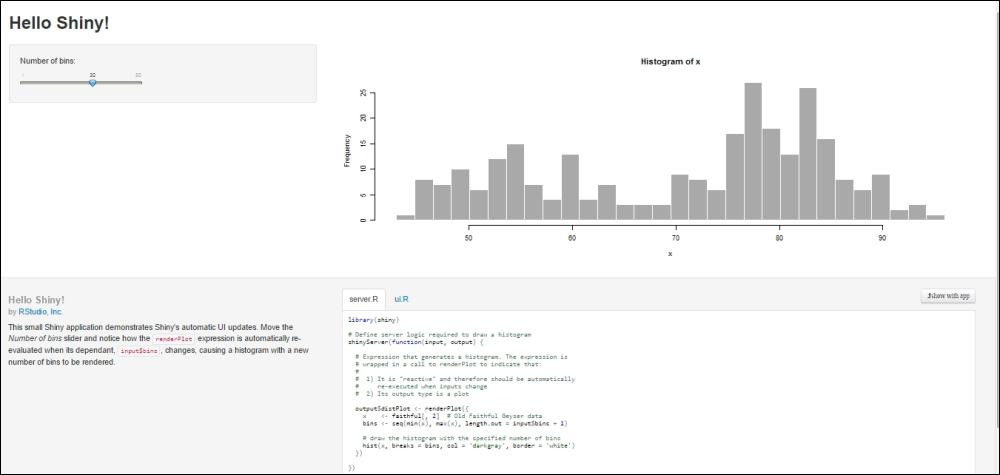An overview of simple examples
The Shiny package includes several examples. The runExample() command, with no arguments passed, displays the available examples as follows:
> runExample() Valid examples are "01_hello", "02_text", "03_reactivity", "04_mpg", "05_sliders", "06_tabsets", "07_widgets", "08_html", "09_upload", "10_download", "11_timer"
To see the examples running, the name of the example must be passed as shown here:
> runExample("01_hello")
The examples are displayed in a separate window that includes the application and both server.R and UI.R, which generate them. The scripts are very well described so that it is easy to understand what each piece of code does:

Some additional examples will be found in the following sections. The scripts for this application are available at Packt Publishing's website, where you can download all the examples in this book. To run it you have to either execute runApp("folder path"), pointing at the application's directory or, in the newest...
























































